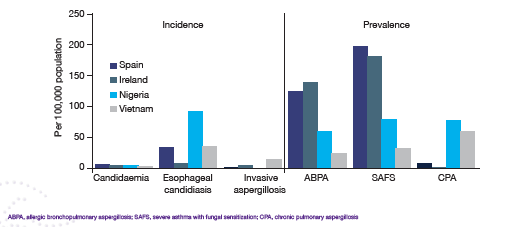
AFWG shall not bear any responsibility for any content on such sites. Any link to a third-party site does not constitute an endorsement of the third party, their site or services. AFWG also makes no warranties as to the content of such sites.
Would you like to continue?
Professor Jeremy Day
Wellcome Trust Intermediate Fellow
Head, CNS & HIV Infections Research Group
Oxford University Clinical Research Unit
Ho Chi Minh City, Vietnam
There are an estimated 2 million life-threatening infections due to invasive fungal infections every year, and more than 90% of these are due to 4 species – Candida, Cryptococcus, Aspergillus and Pneumocystis.1 Immunosuppression and co-morbidities play a significant role in the risk of developing these infections. In Vietnam, tuberculosis, HIV infection, and air pollution are key drivers for fungal infections. A study to estimate the burden of fungal infection in Vietnam offered new insights into the prevalence of AIDS-associated mycoses, aspergillosis and candidiasis.2 In the study, the authors used an actuarial approach to estimate the prevalence of fungal diseases based on the population structure of Vietnam, available incidence and prevalence data from literature.2
The estimated incidence and prevalence of selected fungal infections seemed to be lower compared to several countries; Professor Day noted that the numbers may be underestimated due to a lack of high quality data.2-5 If anything, this study raised more questions about the large unrecognized burden of disease, which warranted further epidemiological research.
Clinical pearls

Figure 1. Incidence and prevalence of selected invasive mycoses, selected countries2-5
ABPA, allergic bronchopulmonary aspergillosis; SAFS, severe asthma with fungal sensitization; CPA, chronic pulmonary aspergillosis.
Highlights of the Medical Mycology Training Network Conference, December 1–3, 2017, Ho Chi Minh City, Vietnam
References